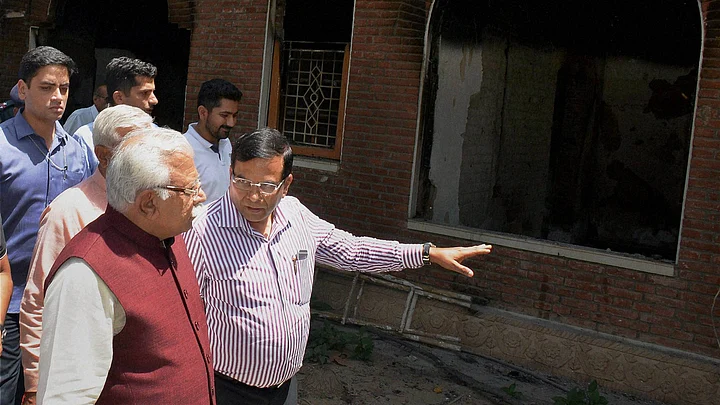Shocking tales of dereliction of duty by civil administration and police personnel during the five days of mayhem in the wake of the Jat stir in Haryana are now coming to light. The state government – which had initially tried to cover up the extent of damage, and even incidents of gang rape during the period – is now getting exposed, thanks to the intervention of the Punjab and Haryana High Court and the State Human Rights Commission.
The Haryana Government itself had set up a Fact Finding Committee under a retired Director General of Police, whose report is still awaited. It had also constituted a Special Investigation Team (SIT) which had denied incidents of gang rapes near Murthal on the Delhi-Ambala National Highway and has also set up a judicial inquiry which is yet to begin work in right earnest.
Fact Finding Committee
It is the testimonies before the Committee and the reports sought by the Punjab and Haryana High Court which have exposed instances of cowardice and blame being passed on to juniors. As skeletons continue to tumble out of the cupboards of these officers, the government has been forced to act. It has shunted out several civil officers from key posts that they were holding during the agitation and have suspended some police officers and personnel who were entrusted with the responsibility of protecting citizens under their charge, but had failed to do so.
At least 32 people were reportedly killed, including those in clashes and firing by security agencies, over 400 had sustained injuries during the five-day period in February when several Jat-dominated areas had been taken over by the protesters and the administration had lost all control till the Army was called in. Though exact figures are yet to be tabulated, the state government has estimated that public and private property valued at around Rs 30,000 crore was damaged or destroyed. Roads were damaged at scores of places and were blocked by an estimated 20,000 trees being felled by protesters.
Police Personnel to be Faulted
The High Court, which had taken suo motu notice of reports of gang rapes and dereliction of duty by police personnel, had sought reports from District and Sessions judges of seven districts most affected by the agitation. It is already well known that the Army was deployed after the acting Chief Justice of the High Court had taken up the issue of security of judicial officers with the state government.
They reported how the judges and magistrates were left with no security and some had to take shelter in the houses of their servants as jats particularly targeted non-jats. The DCs and SPs in some of the districts expressed their helplessness in providing security and advised them to leave.
The district and sessions judge of Rohtak, the epicentre of the agitation, said in his report that “only the properties of non-Jat communities were looted and set on fire, with the exception of finance minister Capt Abhimanyu’s house, who had to bear the brunt for being a minister in the ruling government. There was a total collapse of administrative machinery in Rohtak.
Was Haryana Police in Cahoots With the Protesters?
- Fact Finding Committee report reveals
dereliction of duty by officers leading to some of them being suspended by the Haryana
government.
- Even judicial officers feared for their lives
with some of them taking shelter in the houses of their servants as jats
particularly targeted non-jats.
- The district and sessions judge of Rohtak, in
his report, comments on how the properties of non-jat communities bore the brunt of
the agitation.
Judges Felt Unsafe
Stating that the state policy during the period appeared to be appeasement of a particular community, the judge in his 18-page report, said that most judicial officers had removed beacons from their vehicles as well as nameplates from their houses because the agitators were attacking after identifying the houses or establishments. The report said that judges living in Revenue Colony, Rohtak, had locked their house and shifted to a park fearing attack on houses by mob.
The High Court was informed that while one judicial officer posted at Meham claimed to have saved his life by hiding in fields along with his mother, another judicial officer living in Rohtak had to ride a bike to transport his one-year-old child and wife to a safe place.
(The writer is a senior journalist based in Chandigarh)
Also Read:
Judiciary May Come in the Way of Haryana’s Flawed Jat Quota Bill
Jat Stir Is Another Example of Khattar’s Failure at Governance
